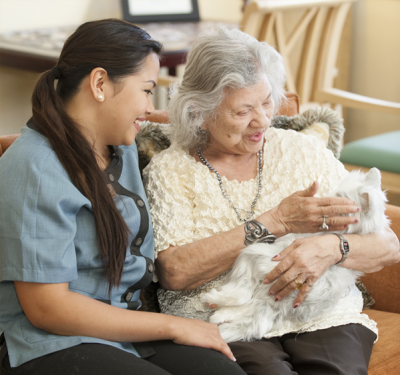Are Robotic Pets the Next Big Thing in Dementia Care?

 Pet therapy is well-known for comforting people with dementia. Snuggling a four-legged friend brings on a smile, soothes anxiety and encourages physical activity. People connect to memories of their own beloved pets. Can a robotic pet replace the real thing?
Pet therapy is well-known for comforting people with dementia. Snuggling a four-legged friend brings on a smile, soothes anxiety and encourages physical activity. People connect to memories of their own beloved pets. Can a robotic pet replace the real thing?
An NBC news article says robotic pets may be the next big thing in dementia care. I'm a baby-boomer who didn't grow up with all the technology we have now. At first I bristled at the idea of robots taking the place of real animals. Or humans for that matter.
But after exploring a little further, I realize it's no-one's intent to replace human care. Known collectively as Socially Assistive Robots (SAR), it seems like there are actually some pretty exciting possibilities!
Robotic pets take on the look and feel of the real thing. while they move, respond to touch, and make sounds. Cats purr and turn over for a belly rub. Dogs bark, snuggle and wag their tails. Examples on the market include Ageless Innovation’s Companion Pets and PARO, a baby harp seal.
A Growing Field:
Research of therapeutic and assistance robots has emerged in the last decade. Alzheimer's disease and other forms of dementia are on the rise world-wide. With it comes greater need for creative approaches to ease behavioral reactions so common in people living with dementia. Consequently, robotic pets may well be a valuable tool for caregivers.
In conclusion, do you have experience with robotic pets? What do you think of the idea?
Ann Catlin, OTR, LMT serves as a consultant with AGE-u-cate Training Institute. For 25 years she has helped caregivers rediscover compassionate touch in person centered dementia care.


